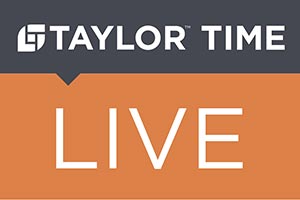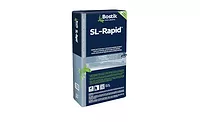The 411 on Healthcare Flooring Installations

Jeff Grimsley, president, Signature Flooring, Inc.
Photo: Signature Flooring, Inc.

Blake Grimsley, vice president, Signature Flooring, Inc.
Photo: Signature Flooring, Inc.

Full sheet vinyl and rubber heat-welded flooring are still used in all operating and intensive care rooms.
Photo: Signature Flooring, Inc.

The design community has come up with some great designs to make the experience of being in the hospital a lot more enjoyable.
Photo: Signature Flooring, Inc.




On a recent episode of Taylor Time Live, Jeffery and Blake Grimsley of Signature Flooring shared their extensive experience as the flooring contractor for numerous healthcare projects in southern California. Jeffery, a 40-year flooring veteran, started Signature Flooring 16 years ago. His son Blake, vice president of Signature Flooring for 11 years, supervises most of the new construction assignments. They joined host Seth Gladden, marketing director for Taylor and Gary Sheidker, director of technical services for Taylor, along with Robert Varden, executive director of CFI for a highly informative discussion about working in the healthcare environment.
According to Jeffery Grimsley, “The COVID world has made us better because we have to think about the small things and protecting ourselves on the job.” Here are a few of the details about installing floor covering in this unique and challenging environment from Jeffrey and Blake Grimsley.
What’s it like installing floor covering in hospitals?
- All crew members must be symptom free, wear full-face masks and full clean room gowns.
- After-hours work has become the norm. That means starting around midnight and being finished and out by 6 or 7am.
- Social distancing is enforced, meaning smaller, staggered crews. For instance, instead of packing the elevator cab, they limit the number of personnel at a time.
- Tools and materials must be fully covered up going in and out of the work environment.
- You must work very quietly … as if you’re not even there.
- Protecting the demo area is critical and you have to be quiet and careful as you walk through areas that are sensitive. “We’re talking about people’s lives here”.
- Dust-free working conditions (because of silica) are a must and odors are always a concern and must be avoided by using low VOC products.
- Sealing off the space (walls, ceilings, doorways, etc.) before installation is mandatory. Often this requires more than plastic sheeting or drop cloths. One solution Jeffrey offered was their use of corrugated plastic panels.
- “We practice extreme sensitivity for privacy and take precautions. We never touch anything left out. If we see a room with files and paperwork lying about, we don’t enter that room to work because we never want to create any problems by mixing up files. The same thing applies to electronic gear or computers. We never unplug them and let the client’s technical people do that.” - Jeffrey
- Basically, conditions are tough, highly scrutinized, uncomfortably hot (because of PPE) and intense to “beat the clock” and get rooms back in service, quickly.
What are some of the secrets to successfully handling hospital floor installations?
- “Your crew needs to be very well trained in what they do—this is an environment where there is no room for error.”
- The crewmembers need to know what’s expected. Some of the projects we have secured are because of the quality and reputation of the crews we have.
- Our crews are even trained in CPR, and carry OSHA 30 and OSHA 10 cards.
- For estimating, you have to factor all the precautions into your scope of work. Generally speaking, your client understands what you’re up against.
- Make sure that the infection control is up in the space you’re working on and it is approved before you start work.
- Using low odor products that install quickly. Two-part epoxies can be problematic in this regard.
- Adhesives are a big factor. Pressure sensitive adhesives have really helped our performance and efficiency.
- Moisture related issues are what you want to address upfront to avoid shutting a room down twice because you didn’t test the floor the first time. We address that upfront, quickly, with the general contractor.
- Everyone must remember that safety is the underlying thing with working in a healthcare environment.
What are some of the trends you’re seeing for floor covering in hospital and healthcare installations?
- As a member of Fuse Alliance, we’re exposed to new products and product innovations on a regular basis, so we stay current on all the trends.
- PVC-free flooring is a big push in southern California.
- The product of choice is LVT. The design community has come up with some great designs to make the experience of being in the hospital a lot more enjoyable. LVT also gives you a more maintenance friendly floor in office areas, too.
- Full sheet vinyl and rubber heat-welded flooring are still used in all operating and intensive care rooms.
- Modular carpet is used mainly in waiting rooms and offices. We rarely install broadloom in healthcare facilities.
- We have had clients mandate that our installers have a flu shot and a TB shot, so it wouldn’t be surprising if proof-of-vaccine for COVID-19 will soon be required. COVID-style safety procedures will likely remain a trend for a long time.
Experienced Crew
Haywood Floor Covering began the removal of the existing vinyl composition tile (VCT) flooring in mid- December 2020. A National 5700 All Day Battery Ride-On Scraper was used for the task. “The machine has the ability to operate for eight to 12-hours a day without requiring a battery charge, which is really important for a large job like this,” said Haywood. “It’s easy to handle, comfortable to drive and is compact enough to fit through standard doors and there were plenty of those on this job.”
As the removal of the existing flooring progressed, the moisture mitigation work began the first week in January 2021 and concluded three weeks later. The leveling process began the second week in January and was completed in about two weeks. From start to finish, Haywood Floor Covering removed the 27,000 square feet of old flooring and prepped the substrate for new flooring in approximately five weeks.
Project Completed on Time and on Budget
Thanks to the experience of McGhee, Haywood and Hoover in selecting the right equipment and remediation products, the removal of the old VCT flooring and the substrate remediation were completed on time and on budget. Hoover, however, brings another element of success into the equation.
“For a large project like this, success is predicated on good communication and coordination from the contractor,” he said. “Roscoe McGhee is one of the best at that. He was in constant communication with everyone involved in the flooring removal and substrate remediation. He coordinated with the county on the scheduling. He made the subcontractors and the trades involved well aware of what was going on and when. He also stayed on top of every delivery of both equipment and materials to make certain that they were on site when they were needed. In today’s flooring installation world, time is money and Roscoe’s communications and coordination skills made all the difference in the world for those involved in this project.”
Looking for a reprint of this article?
From high-res PDFs to custom plaques, order your copy today!













